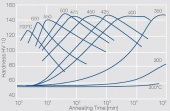Legierungen wie Messinge (CuZn), Zinnbronzen (CuSn) und Neusilber (CuNiZn), bei denen die gewünschte Festigkeit durch Kaltumformung erzeugt wird, werden als naturharte Legierungen bezeichnet. Zu dieser Gruppe sind auch die Silberbronzen mit Silbergehalten von 2 bis 6 Massen-% zu zählen.
Kupfer-Zink-Legierungen (Messing)
Kupfer-Zink-Legierungen finden wegen ihrer ausreichend hohen elektrischen
Leitfähigkeit, der gegenüber Kupfer höheren Festigkeit bei noch guter Verarbeitbarkeit
und des günstigen Preises brei...


